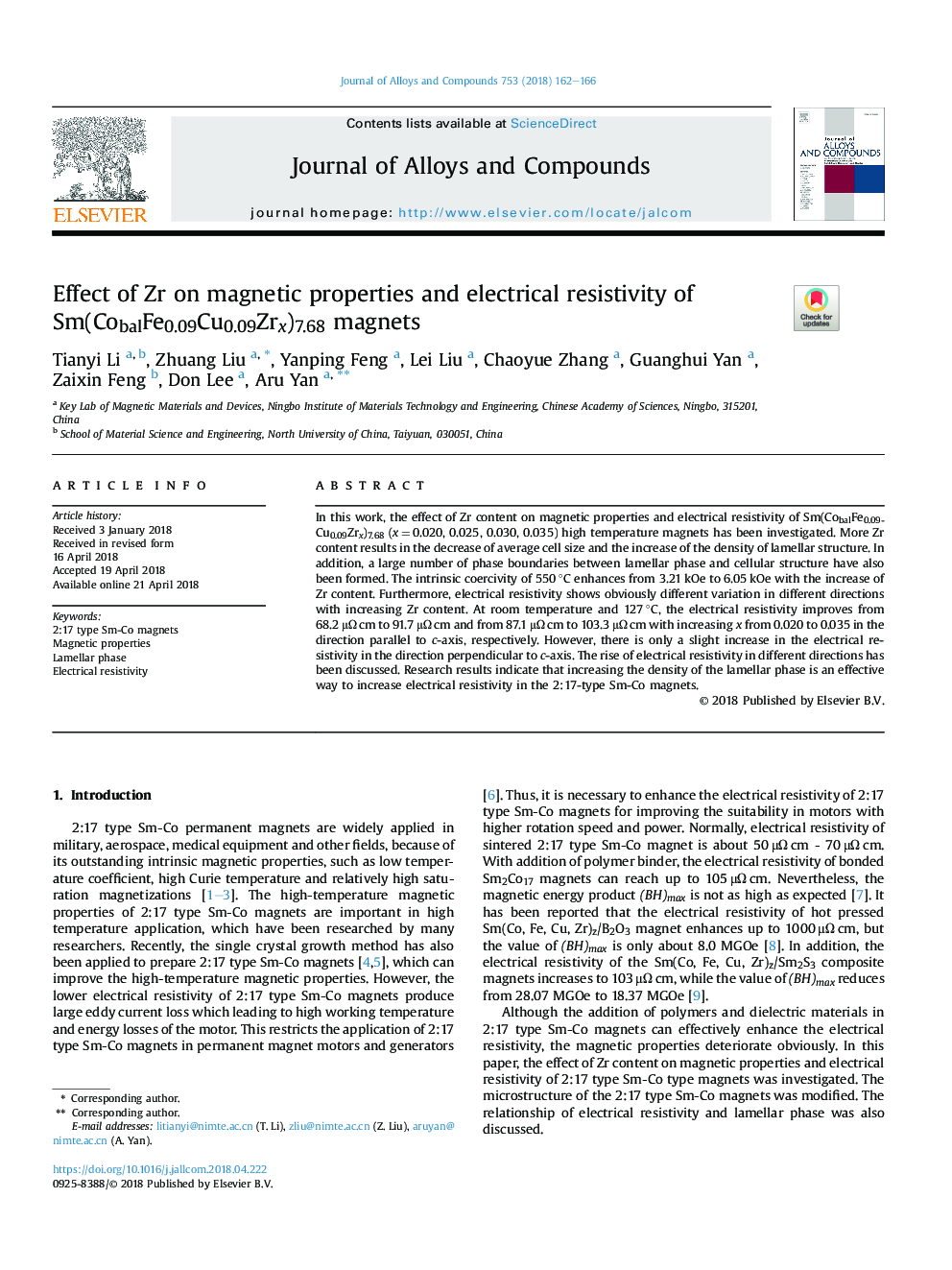| Article ID | Journal | Published Year | Pages | File Type |
|---|---|---|---|---|
| 7991468 | Journal of Alloys and Compounds | 2018 | 5 Pages |
Abstract
In this work, the effect of Zr content on magnetic properties and electrical resistivity of Sm(CobalFe0.09Cu0.09Zrx)7.68 (xâ¯=â¯0.020, 0.025, 0.030, 0.035) high temperature magnets has been investigated. More Zr content results in the decrease of average cell size and the increase of the density of lamellar structure. In addition, a large number of phase boundaries between lamellar phase and cellular structure have also been formed. The intrinsic coercivity of 550â¯Â°C enhances from 3.21â¯kOe to 6.05â¯kOe with the increase of Zr content. Furthermore, electrical resistivity shows obviously different variation in different directions with increasing Zr content. At room temperature and 127â¯Â°C, the electrical resistivity improves from 68.2â¯Î¼Î©â¯cm to 91.7â¯Î¼Î©â¯cm and from 87.1â¯Î¼Î©â¯cm to 103.3â¯Î¼Î©â¯cm with increasing x from 0.020 to 0.035 in the direction parallel to c-axis, respectively. However, there is only a slight increase in the electrical resistivity in the direction perpendicular to c-axis. The rise of electrical resistivity in different directions has been discussed. Research results indicate that increasing the density of the lamellar phase is an effective way to increase electrical resistivity in the 2:17-type Sm-Co magnets.
Related Topics
Physical Sciences and Engineering
Materials Science
Metals and Alloys
Authors
Tianyi Li, Zhuang Liu, Yanping Feng, Lei Liu, Chaoyue Zhang, Guanghui Yan, Zaixin Feng, Don Lee, Aru Yan,
